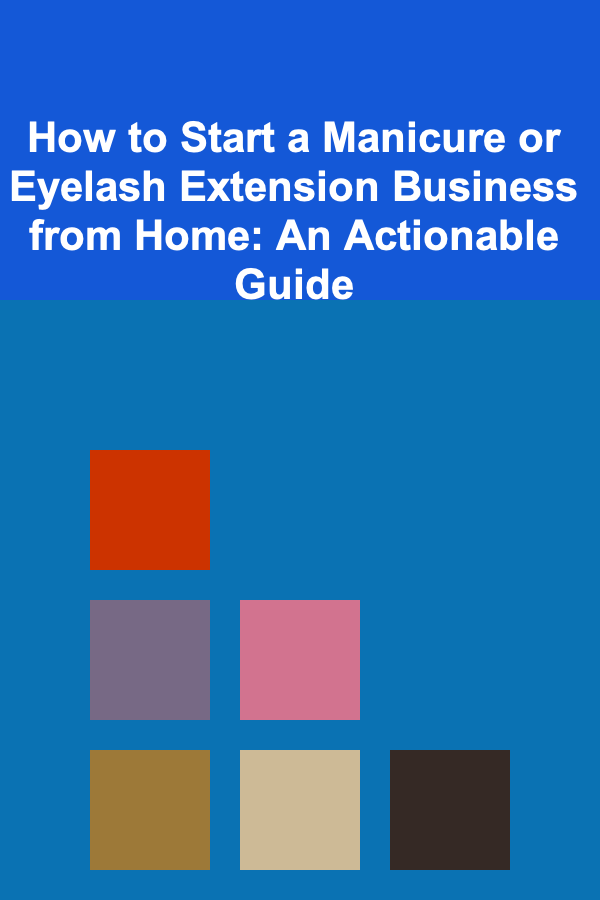
How to Use Exit-Intent Popups to Recover Abandoned Carts in Your Dropshipping Store
ebook include PDF & Audio bundle (Micro Guide)
$12.99$6.99
Limited Time Offer! Order within the next:

If you're running a dropshipping store, you've likely encountered cart abandonment -- the bane of online retail. Customers add products to their carts, browse a bit more, and then... vanish. In fact, according to recent studies, the average cart abandonment rate is somewhere between 60% to 80%. While it's normal for some visitors to leave without making a purchase, there are ways to tackle this issue head-on. Enter: exit-intent popups.
Exit-intent popups are a powerful tool for re-engaging customers who are about to leave your site. These popups trigger when a user's mouse moves towards the browser's back button or address bar, signaling that they intend to leave. You can use this moment to make a compelling offer, remind them of the products in their cart, or even provide an incentive to complete the purchase.
In this guide, we'll dive deep into how you can leverage exit-intent popups to recover abandoned carts and boost your sales.
What is an Exit-Intent Popup?
An exit-intent popup is a type of on-site message that appears when a user is about to exit your website. The trigger for this action is often a cursor movement towards the top of the page, which suggests that the user is either about to leave the page, close the browser, or navigate away. The goal of these popups is simple: convince the user to stay just a little longer and take action.
When used in the context of cart abandonment, exit-intent popups are designed to remind the user of their abandoned cart, offer incentives to finalize the purchase, or even present an alternative that may capture their interest.
Why Use Exit-Intent Popups for Cart Recovery?
Before jumping into the mechanics, let's first explore why exit-intent popups are so effective for cart recovery:
- Targeted and Timely: Exit-intent popups capture a visitor's attention right when they are about to leave, which makes the message highly relevant.
- Non-Intrusive: Since exit-intent popups only appear when the user is about to leave, they don't interfere with the browsing experience and are less likely to be considered disruptive.
- Behavioral Trigger: These popups leverage behavioral psychology by targeting users who have already shown interest in your products, making them more likely to convert.
- Conversion Opportunity: By offering a special deal, discount, or reminder, exit-intent popups create an additional opportunity to convert users who were on the verge of abandoning their cart.
How to Set Up Exit-Intent Popups for Your Dropshipping Store
1. Choose the Right Exit-Intent Popup Tool
The first step is selecting a tool that allows you to create and display exit-intent popups. Most modern e-commerce platforms like Shopify, WooCommerce, and BigCommerce offer plugins and apps to integrate exit-intent technology easily. Here are some popular options:
- OptinMonster: One of the most popular tools for creating exit-intent popups, with robust customization and targeting features.
- Sumo: Another great option that allows you to build popups for cart abandonment and other actions.
- Privy: A user-friendly tool for creating popups that target visitors who abandon their carts.
- CartHook: Specifically focused on cart abandonment recovery and abandoned cart emails.
Make sure the tool you select integrates well with your platform and provides the flexibility to tailor the popups to your needs.
2. Create a Compelling Offer
The key to an effective exit-intent popup is offering something valuable enough to convince the user to stay. This could be in the form of a:
- Discount: Offer a limited-time discount, such as "10% off your order if you complete your purchase within the next 15 minutes."
- Free Shipping: If you haven't already offered free shipping, this is a powerful incentive that can push a customer to check out. Try "Free shipping on your order if you check out now!"
- Social Proof: Include reviews or testimonials in your popup to build trust and show that others have had a positive experience with your store.
- Bonus Gift: Sometimes, adding a free gift with purchase can be the final nudge to convert a visitor. For example, "Get a free tote bag with your order today!"
The idea is to present something that reduces friction and makes the purchase more enticing.
3. Craft a Persuasive Message
The popup message needs to be concise, clear, and persuasive. You're interrupting the user's departure, so the message should quickly capture attention and offer a compelling reason to stay.
Key elements of a persuasive message include:
- Urgency: Phrases like "Limited time offer" or "Only a few items left!" create a sense of urgency that encourages users to act quickly.
- Personalization: If possible, personalize the popup to include details of the items in the user's cart, e.g., "You've left [Product Name] in your cart---complete your purchase now and save 10%!"
- CTA (Call to Action): Your popup should include a clear and compelling CTA, such as "Claim My Discount" or "Finish Your Order Now." This makes it obvious what action the user should take.
4. Design the Popup to Stand Out
The design of your popup is crucial. It should be visually appealing, align with your brand, and draw attention without being too intrusive. Here are a few design tips:
- Simple and Clean Layout: Avoid clutter. The message should be the focal point, with a clear CTA button that stands out.
- Use Contrasting Colors: Make the CTA button pop with contrasting colors. Use colors that are aligned with your brand but are still eye-catching.
- Mobile Optimization: Ensure the popup is optimized for mobile users, as a large portion of online shopping happens on mobile devices.
- Include a Close Option: Let users close the popup if they're not interested. This ensures the user experience remains positive, even if they don't convert.
5. A/B Test Your Popups
Not every popup is guaranteed to work. That's why A/B testing is essential. You can test different offers, designs, CTAs, and messaging to see which one yields the best results.
For example, you might want to test:
- Different discount percentages: Does a 10% discount work better than a 5% discount?
- Urgency vs. Social Proof: Does a countdown timer push users to act faster, or does showing customer reviews convert more visitors?
Through continuous A/B testing, you'll gain insights into what resonates most with your audience and refine your exit-intent strategy.
6. Monitor and Optimize for Performance
After you've implemented your exit-intent popups, it's crucial to track their performance. Key metrics to monitor include:
- Conversion Rate: How many users who saw the popup ended up completing their purchase?
- Engagement Rate: How many people interacted with the popup (clicked the CTA button)?
- Bounce Rate: Did the popup cause users to bounce or leave the site faster?
Regularly monitor these metrics and adjust your strategy accordingly. For instance, if you notice that a specific type of offer (e.g., free shipping) converts better than a discount, you can prioritize it.
Best Practices for Using Exit-Intent Popups
- Don't Overuse Popups: While exit-intent popups can be highly effective, using them too often may annoy users. Use them selectively for abandoned carts or high-intent actions.
- Timing is Key: Make sure your popups appear at the right time. If they show up too early, they can be disruptive, while showing them too late might miss the opportunity to convert.
- Be Transparent: If you're offering a discount or special deal, be clear about any conditions (e.g., limited time, minimum purchase) to avoid misleading your customers.
- Don't Forget the Mobile Experience: With more people shopping on mobile, ensure your exit-intent popups are fully responsive and provide a smooth user experience across all devices.
Conclusion
Exit-intent popups are a powerful tool for recovering abandoned carts in your dropshipping store. By using targeted messaging, compelling offers, and engaging designs, you can reduce cart abandonment and increase your conversion rates. Remember, the key to success lies in personalization, timing, and continuous optimization. If used wisely, exit-intent popups can transform the way you engage with potential customers and improve your bottom line.
Reading More From Our Other Websites
- [Home Rental Property 101] How to Handle Security Deposits and Refunds Properly
- [Personal Care Tips 101] How to Use Mouthwash to Combat Teeth Grinding Effects
- [Home Budget Decorating 101] How to Make a DIY Headboard That Fits Any Shoestring Budget
- [Home Space Saving 101] How to Design a Small Living Room That Feels Spacious
- [Organization Tip 101] How to Store Long Chains or Heavy Pieces Safely
- [Personal Care Tips 101] How to Treat Your Cuticles with a Weekly Cuticle Oil Treatment
- [Home Holiday Decoration 101] How to Use Lights to Transform Your Home for the Holidays
- [Digital Decluttering Tip 101] Clean Feed: How to Optimize Your Devices and Apps for a Noise-Free Online Experience
- [Sewing Tip 101] Sewing 101: Essential Stitches Every Beginner Must Master
- [Home Cleaning 101] How to Clean Your Home Without Creating a Mess

Frugal Living Tips: How to Live Well on a Tight Budget
Read More
How to Deal with Difficult Tenants Without Losing Your Patience
Read More
How to Refinance Loans for Better Financial Health
Read More
How to Start a Manicure or Eyelash Extension Business from Home: An Actionable Guide
Read More
10 Tips for Planning Content for Your Small Business
Read More
10 Tips for Overcoming Stage Fright as an Actor
Read MoreOther Products

Frugal Living Tips: How to Live Well on a Tight Budget
Read More
How to Deal with Difficult Tenants Without Losing Your Patience
Read More
How to Refinance Loans for Better Financial Health
Read More
How to Start a Manicure or Eyelash Extension Business from Home: An Actionable Guide
Read More
10 Tips for Planning Content for Your Small Business
Read More